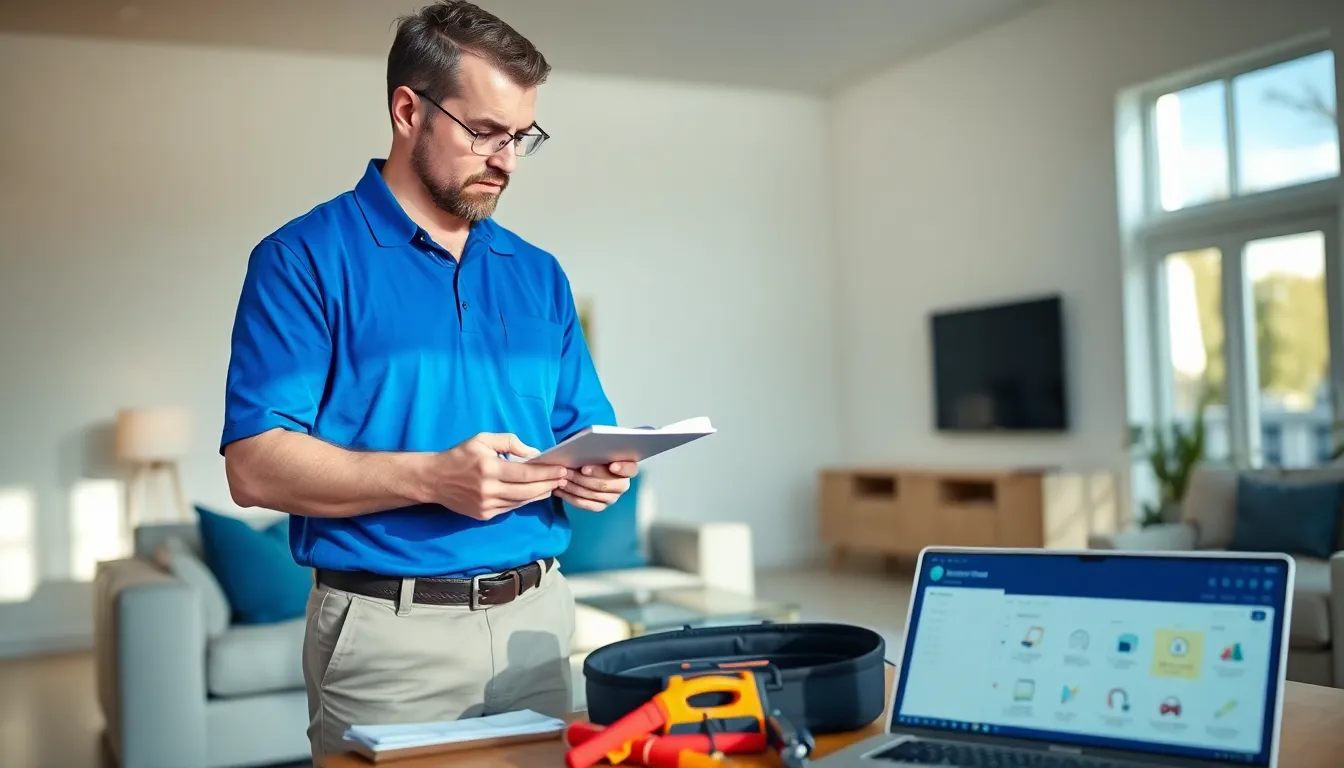Picture this: you’re lounging on your couch, sipping coffee, and then it hits you, when was the last time you checked the corners of your home for hidden issues? A home maintenance inspection might just be the unsung hero in your homeowner saga. This unassuming task could save you from unforeseen expenses and heartache down the line. So, grab your notepad, because we’re diving deep into everything you need to know about home maintenance inspections, like how they can turn your house from a potential disaster zone into a cozy sanctuary. Trust us, your future self will thank you.
Table of Contents
ToggleUnderstanding Home Maintenance Inspections

Home maintenance inspections serve as a systematic evaluation of a residence, focusing on numerous components essential to the property’s integrity. They usually encompass both the interior and exterior of the home, providing a comprehensive overview of its condition. The inspector typically checks various elements such as structural integrity, plumbing, electrical systems, and roofing.
There’s a notable difference between a home maintenance inspection and a real estate inspection, although they may seem similar. The former helps homeowners keep their property in peak condition, while the latter primarily assesses a property’s condition for potential buyers. Being aware of this difference is crucial in establishing proactive measures to maintain a home.
The Importance of Regular Inspections
Regular home maintenance inspections are not merely suggestions: they’re essential for ongoing property health. Much like routine check-ups for a vehicle, conducting these inspections can prevent minor issues from escalating into significant, costly repairs. For instance, unnoticed water leaks can lead to substantial damages if left unchecked.
Besides, a well-maintained home typically boasts improved energy efficiency, translating to consistent savings on utility bills. When every system operates efficiently, it not only enhances comfort but also prolongs the lifespan of essential components, like HVAC systems.
Key Areas to Inspect in Your Home
When preparing for a home maintenance inspection, it is vital to know where to focus. Here are several key areas to pay attention to during the process:
Roof and Gutters
Ensuring that the roof is in good condition is paramount. Inspect shingles for wear and ensure gutters are free of debris to promote proper drainage.
Plumbing
Checking for leaks, water pressure issues, and proper drain function can help identify concerns before they become problematic.
Electrical Systems
Outdated wiring, faulty outlets, and overloaded circuits can indicate a safety risk. Regular inspections can pinpoint these concerns early.
HVAC Systems
Regular servicing is critical. Inspecting air filters, ducts, and overall system efficiency can lead to better indoor air quality and comfort.
Foundation
Look for cracks and signs of moisture penetration in walls and floors, indicating potential structural concerns.
How to Prepare for a Home Maintenance Inspection
Preparation is key for a successful home maintenance inspection. Following these steps can streamline the process and ensure no issues fall through the cracks:
- Declutter Spaces: Clear any areas that need to be inspected, such as the attic, crawl spaces, and utility rooms. This makes it easier for the inspector to do a thorough job.
- Document Past Repairs: Keep track of any repairs or upgrades you’ve made to your home. Having this information handy can give the inspector valuable context about your home’s history.
- Access Points: Ensure that the inspector has easy access to key areas, including the furnace, water heater, attics, and basements. Locking pets up during the inspection can also help avoid distractions.
- Prepare Questions: Think of questions about any concerns you have about your home. Engaging the inspector in discussion can provide deeper insights.
Choosing the Right Inspector
Selecting a qualified home inspector can greatly influence the inspection results. Here are some tips for finding the right professional:
- Check Credentials: Ensure that the inspector has the necessary licenses and certifications. Look for affiliations with recognized organizations within the industry.
- Read Reviews: Past client feedback can provide insight into the inspector’s efficiency and thoroughness. Prioritize inspectors with positive reviews and a solid reputation.
- Ask About Experience: An inspector with years of experience can often spot potential issues that a less seasoned inspector might miss.
- Request Sample Reports: This can provide clarity on what the inspection covers, ensuring it aligns with your needs.
Common Issues Found During Inspections
Home inspections can uncover a variety of common issues, many of which can be addressed if caught early. Here are a few frequent offenders:
Water Damage
Signs of moisture, mold, or wood rot may be indicative of poor drainage systems or leaks.
Electrical Problems
From outdated circuit breakers to ungrounded outlets, electrical issues are a common concern that can pose safety hazards.
HVAC Deficiencies
An older HVAC system might show signs of wear, impacting efficiency and comfort levels.
Pest Infestation
Indicators of pests such as termites, rodents, or other unwanted guests can lead to significant damage if not treated promptly.


